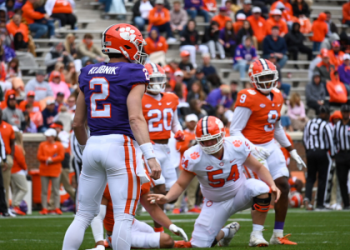Well, I reckon some of y’all might be wonderin’ what in tarnation “MVR” means when it comes to baseball. Now, don’t go fussin’, ’cause I’m here to tell ya in plain ol’ language what it’s all about. MVR stands for “Mound Visits Remaining,” and it ain’t nothin’ too complicated once you get the hang of it.

Now, if you’ve ever sat down to watch a baseball game, you’ve probably seen a little counter somewhere on the screen that shows how many “mound visits” a team’s got left. What’s that about, you ask? Well, let me tell ya. A mound visit happens when the coach or a player goes up to talk to the pitcher, usually to give ’em a breather or to settle their nerves. But here’s the thing – there ain’t no unlimited visits allowed, not like some folks might think. There’s a limit, and that’s where MVR comes into play.
What’s the Rule About MVR?
Now, the MVR rule, well, it says that a team can only go up to the pitcher’s mound a set number of times during the game. In Major League Baseball, they let each team have six visits during a regular nine-inning game. But, mind ya, that ain’t for free – you can’t just go talk to the pitcher willy-nilly without consequences. If a team runs outta their mound visits, then any more visits they make have to involve takin’ the pitcher outta the game and bringin’ in a new one. And that can change the whole flow of the game, I tell ya!
Why’s This MVR Thing So Important?
You might be wonderin’ why all this MVR business matters. Well, lemme tell ya, it’s about strategy, plain and simple. If a pitcher starts gettin’ tired or messin’ up, the coach might need to go chat with ‘em to fix things up. But if they’ve already used up all their mound visits, they might just have to pull the pitcher right then and there. That could be a real big deal if the game’s on the line.

And it ain’t just about the pitchers, either. The game’s got a rhythm to it, and too many visits can mess that up. If a team’s takin’ too many breaks, it slows down the pace and might mess with the other team’s focus, too. So teams gotta be careful about how and when they use their visits.
What Happens in Extra Innings?
Now, if the game goes into extra innings, you might think that means they get more mound visits, but that ain’t quite true. They do get a little extra leeway – one more visit per inning, to be exact. But after that, it’s the same story: no more free visits without changin’ the pitcher. That can put a lotta pressure on a team, especially if they’re down to their last few visits and the game keeps goin’.
What Happens If You Run Outta Visits?
Well, if a team runs outta mound visits before the game ends, any further visits to the mound require a pitching change. That means they gotta bring in a new pitcher, which can shake up the game real good. Now, not all teams are built the same, so some teams might be more prepared for a quick pitcher change, while others might struggle a bit more. That’s where strategy comes in again. Teams gotta make sure they balance their mound visits with how much they trust their bullpen – that is, the pitchers sittin’ on the bench, ready to take over when needed.

Some Interesting Facts About MVR
- Each team gets 6 mound visits in a regular 9-inning game.
- If the game goes into extra innings, each team gets one more mound visit per inning.
- If all the mound visits are used up, the team must change the pitcher if they want to talk to ‘em.
- Too many mound visits can mess with the flow of the game and affect a team’s rhythm.
- The MVR rule was put in place to speed up the game and make teams think more about their strategy.
So there ya go – that’s what MVR means in baseball, and why it’s important. It’s just one of them little rules that adds a whole lotta strategy to the game. Next time you’re watchin’ a baseball game and you see that MVR counter pop up, you’ll know exactly what it’s all about. And when a team runs outta visits, well, you’ll be ready to see just how that changes the whole feel of the game.
Tags: [MVR in Baseball, Mound Visits, Baseball Strategy, MLB Rules, Mound Visit Limit, Baseball Pitching]





